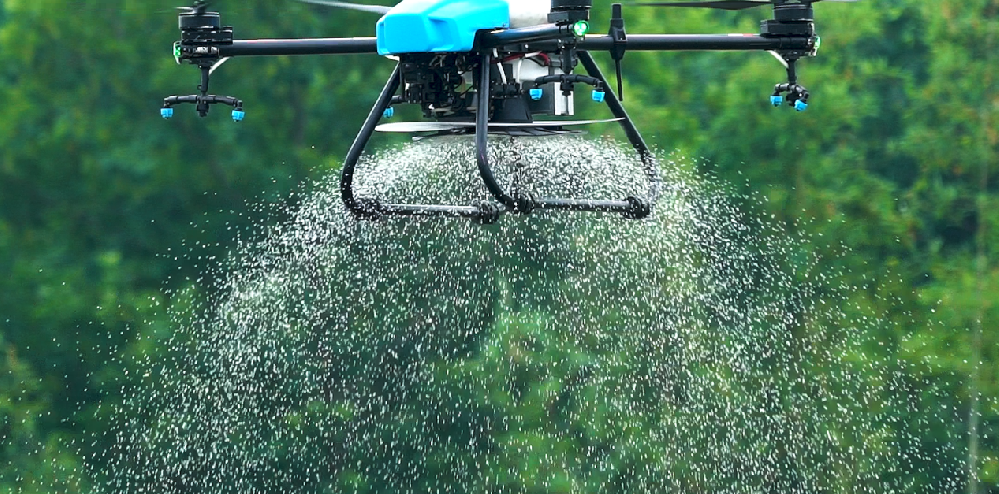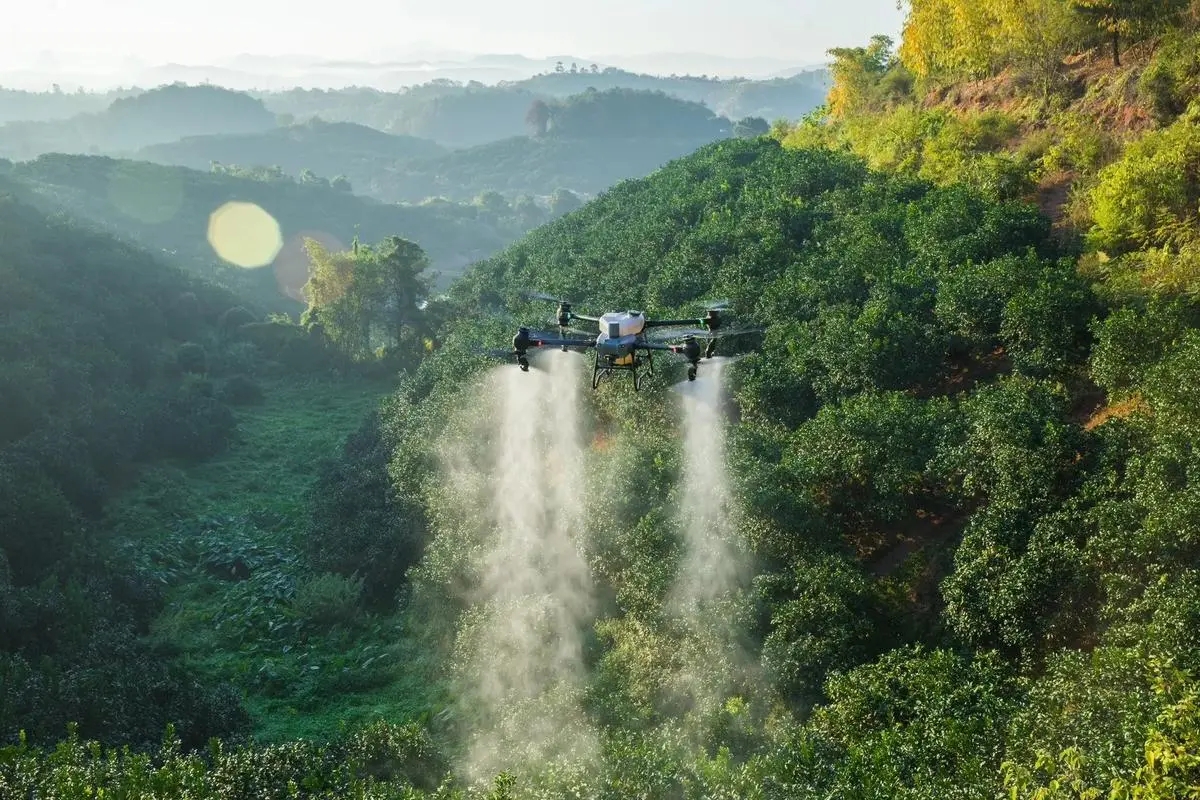

— Blogs —
—Products—
 Consumer hotline +8618073152920
Consumer hotline +8618073152920 WhatsApp:+8615367865107
Address:Room 102, District D, Houhu Industrial Park, Yuelu District, Changsha City, Hunan Province, China
Product knowledge
Time:2024-05-05 20:23:15 Popularity:1080
A plant protection drone is a device that uses drone technology for plant protection. It is usually equipped with a sprayer or other types of spraying equipment that can spray pesticides, fertilisers or other plant protection agents in the air on farmland, orchards and other crops. Plant protection drones can achieve accurate and efficient plant protection operations, while reducing labour costs and pesticide use, and reducing environmental pollution.
The working principle of plant protection drones is to monitor real-time information such as the vegetation condition, pest and disease situation of farmland through various sensors and control systems carried on board, and carry out automated spraying operations according to preset operation paths and parameters. This intelligent operation can improve the efficiency and precision of agricultural operations and reduce the impact of human factors on the quality of operations.

Plant protection drones have a wide range of applications in agricultural production, especially in large farmland, mountainous areas, hilly areas and other areas where traditional farm machinery is difficult to enter or where operational efficiency is low. With the progress of technology and the increase of market demand, the application scope and technical level of plant protection UAVs are constantly improving, which will bring more convenience and benefits to agricultural production.
Plant protection drones need the following meteorological conditions during operation:
1. Moderate wind: wind is one of the key factors affecting the operation of plant protection drones. Generally speaking, the wind force should be less than level 4 to avoid excessive wind force affecting the flight stability and spraying effect of the drone. When the wind is greater than level 6, the operation should be strictly prohibited to avoid safety accidents.
2. No rainfall weather: Rainfall weather will adversely affect the operation of the plant protection drone, because the rain will wash away the pesticides sprayed on the surface of the crops and reduce the control effect. Therefore, the plant protection drone should choose the weather conditions without rainfall when operating.

3. High visibility: Low visibility weather such as haze and fog will affect the flight safety and operation effect of the plant protection drone. When the visibility is less than 0.5 miles (about 800 metres), it should be regarded as foggy weather, which is not suitable for plant protection drone operation.
4. Suitable temperature: Temperature has an effect on the battery performance of the plant protection drone and the activity of pesticides. Too high or too low temperature will affect the operation efficiency and spraying effect of the UAV. Therefore, care should be taken to choose a time period with moderate temperature during operation.
In addition, plant protection drones need to take into account other meteorological factors such as air pressure and humidity during operation. Although these factors have a relatively small impact on the operational effect, they also require attention.
Small weather stations play a key role in the application of plant protection drones, and their main role is reflected in the following aspects:
1. Providing accurate meteorological data: small weather stations are able to monitor and record a variety of meteorological elements in real time, such as temperature, humidity, wind speed, wind direction, air pressure, precipitation, and so on. These accurate meteorological data are crucial to the operation of plant protection drones, which can ensure that the drones operate under suitable meteorological conditions and improve operational efficiency and effectiveness.
2. Aiding operational decision-making: through the analysis of meteorological data, the small weather station can provide decision-making support for the operation of plant protection drones. For example, in the case of strong wind or heavy precipitation, the drone may not be able to operate normally or the operation effect is not good, at this time, according to the meteorological data to adjust the operation plan or choose other operation time.
3. Early warning and prevention: Some advanced small weather stations also have early warning functions, which can predict future weather changes based on the collected data and issue warning signals when necessary. This is especially important for plant protection drones, which can make preparations in advance to avoid operation failure or equipment damage caused by bad weather.
4. Optimise operational results: Through real-time monitoring of meteorological data, it is possible to understand the environmental conditions under which crops are growing, and provide optimisation suggestions for plant protection drone operations. For example, in the case of higher temperature and lower humidity, the spraying volume can be appropriately increased to improve the adhesion effect of pesticides and the control effect.
5. Promote the sustainable development of agriculture: the application of small weather stations not only helps to improve the operational efficiency and effect of plant protection drones, but also helps to promote the sustainable development of agriculture. Through the analysis and application of meteorological data, planting plans, management of farmland resources, pest control, etc. can be formulated more scientifically to improve the stability and sustainability of agricultural production.
In conclusion, small weather stations play an important role in the application of plant protection drones, providing accurate meteorological data support, decision-making assistance, early warning and prevention functions for drone operations, which helps optimise operational effects, improve agricultural production efficiency and promote sustainable agricultural development.
Prev:Weather stations are used in forests
Next:Small weather station: used for monitoring various meteorological elements
Related recommendations
Sensors & Weather Stations Catalog
Agriculture Sensors and Weather Stations Catalog-NiuBoL.pdf
Weather Stations Catalog-NiuBoL.pdf
Related products
 Combined air temperature and relative humidity sensor
Combined air temperature and relative humidity sensor Soil Moisture Temperature sensor for irrigation
Soil Moisture Temperature sensor for irrigation Soil pH sensor RS485 soil Testing instrument soil ph meter for agriculture
Soil pH sensor RS485 soil Testing instrument soil ph meter for agriculture Wind Speed sensor Output Modbus/RS485/Analog/0-5V/4-20mA
Wind Speed sensor Output Modbus/RS485/Analog/0-5V/4-20mA Tipping bucket rain gauge for weather monitoring auto rainfall sensor RS485/Outdoor/stainless steel
Tipping bucket rain gauge for weather monitoring auto rainfall sensor RS485/Outdoor/stainless steel Pyranometer Solar Radiation Sensor 4-20mA/RS485
Pyranometer Solar Radiation Sensor 4-20mA/RS485
Screenshot, WhatsApp to identify the QR code
WhatsApp number:+8615367865107
(Click on WhatsApp to copy and add friends)
